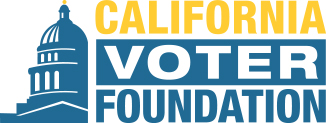Excerpt:
The 2024 primary election is just six months away, and, thanks to a series of measures over the last few years, the process will look a little different for voters.
For one, it’s the first presidential primary in which everyone can vote by mail. Because California’s top-two primary system — in which the two top vote-getters regardless of party move on to the November general election — doesn’t apply to presidential primaries, voters registered as Democrats or Republicans will receive a two-part ballot: the first includes the presidential candidates, and the second lists all the other races and measures.
But there are also several bills from the just-adjourned legislative session that aim to make voting a little bit easier. Among the most prominent is Assembly Bill 421, by Assemblymember Isaac Bryan, that clarifies language on referendums and that Gov. Gavin Newsom signed into law earlier this month.
But 18 other election-related bills await the governor’s decision. Among them:
-
AB 545, which requires all counties to provide curbside voting for people with disabilities, along with other increased accessibility measures. That’s one of six bills authored by Assemblymember Gail Pellerin — a former county clerk who took over as chairperson of the Assembly’s elections committee when Bryan was named majority leader.
-
Pellerin also authored AB 969 — in direct response to Shasta County’s move to get rid of Dominion voting machines and hand count ballots — which requires machines for most elections.
-
SB 77 by Sen. Tom Umberg, allows election officials to reach out by phone, email or text message to verify voters’ signatures instead of just through mail. AB 626, also by Pellerin, would allow people to return their vote-by-mail ballot in person, without an envelope, so it can be counted right away.
While SB 77 and AB 626 aim to help election officials and voters, as a bonus, they could also speed up the vote-counting process.
That’s something Kim Alexander, president of the California Voter Foundation, believes is an important issue for the state to address.
-
Alexander: “Long vote counts provide the opportunity for campaigns who see their Election Night margins shrink to raise doubts about the accuracy of the process and undermine public confidence. Long vote counts also delay the ability of the winning candidate to prepare to take office and serve his or her voters, putting those constituents at a disadvantage.”
Making voting simpler could also get more people to register to vote — Tuesday was National Voter Registration Day — and increase participation.
In the November 2022 election, more than 11.1 million Californians voted, but 26.9 million were eligible. In the last presidential election, in 2020, 17.8 million voted, of 25.1 million eligible.
For the record: This item has been updated to more precisely describe the mail ballots that registered Democrats and Republicans will receive for the March primary. (Full Story)

